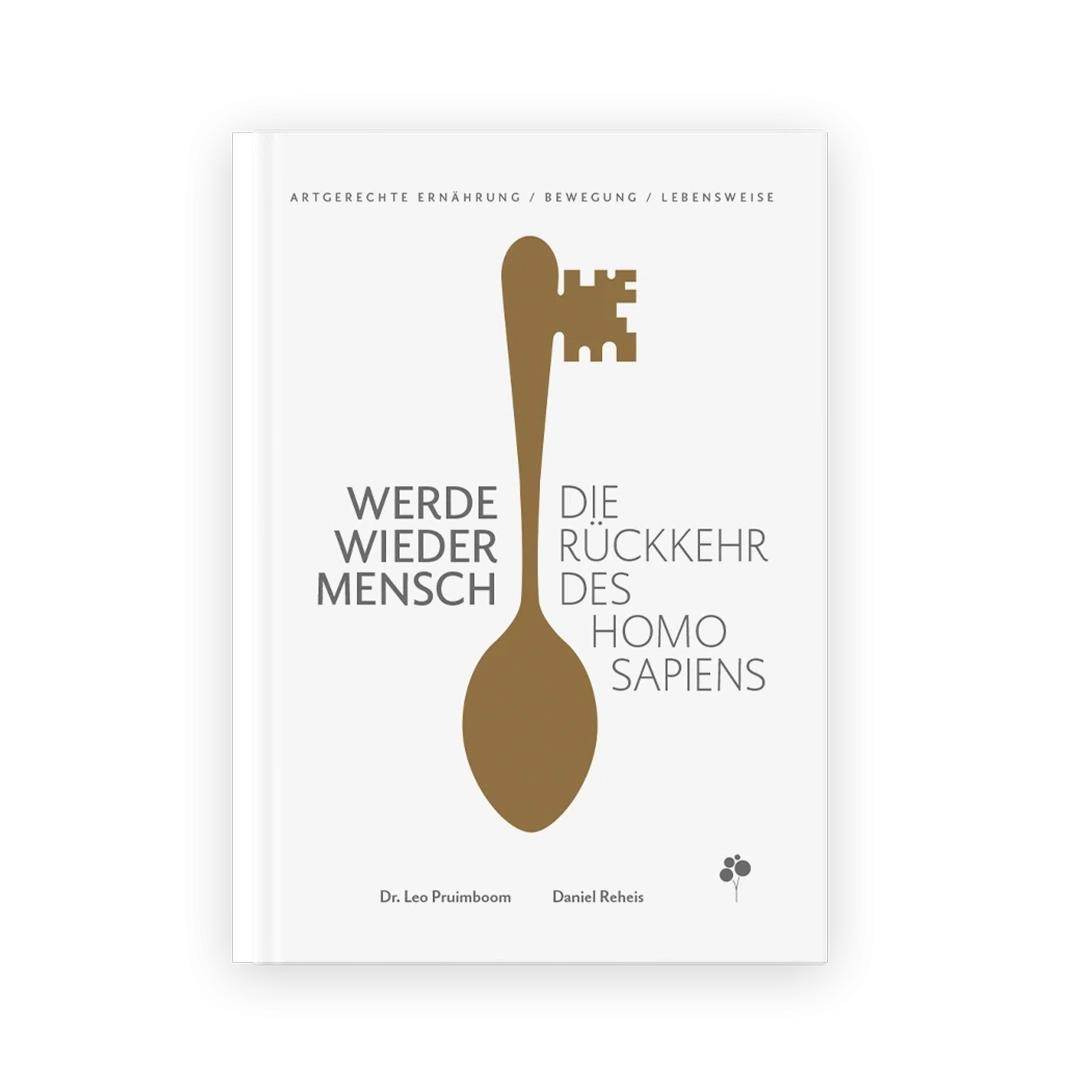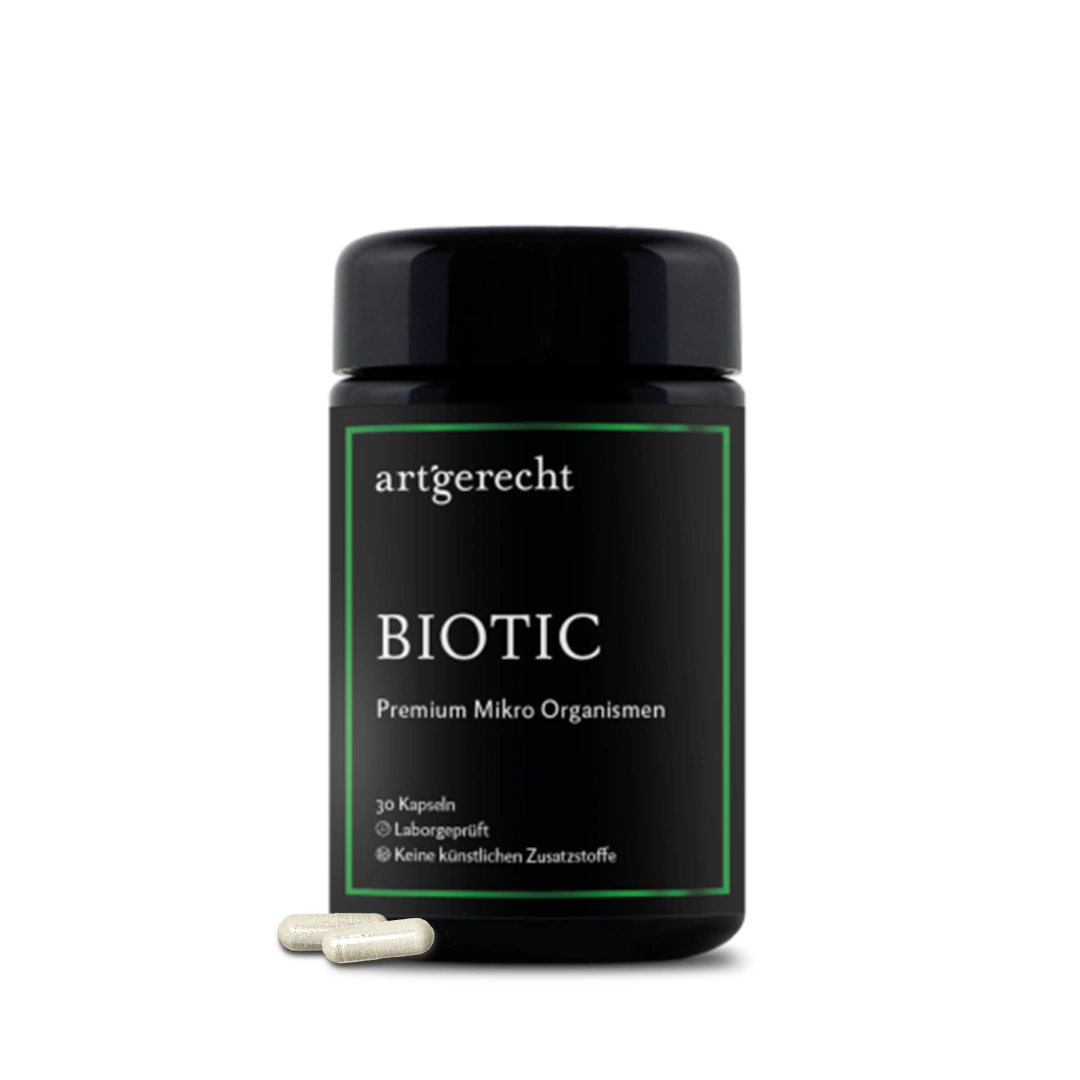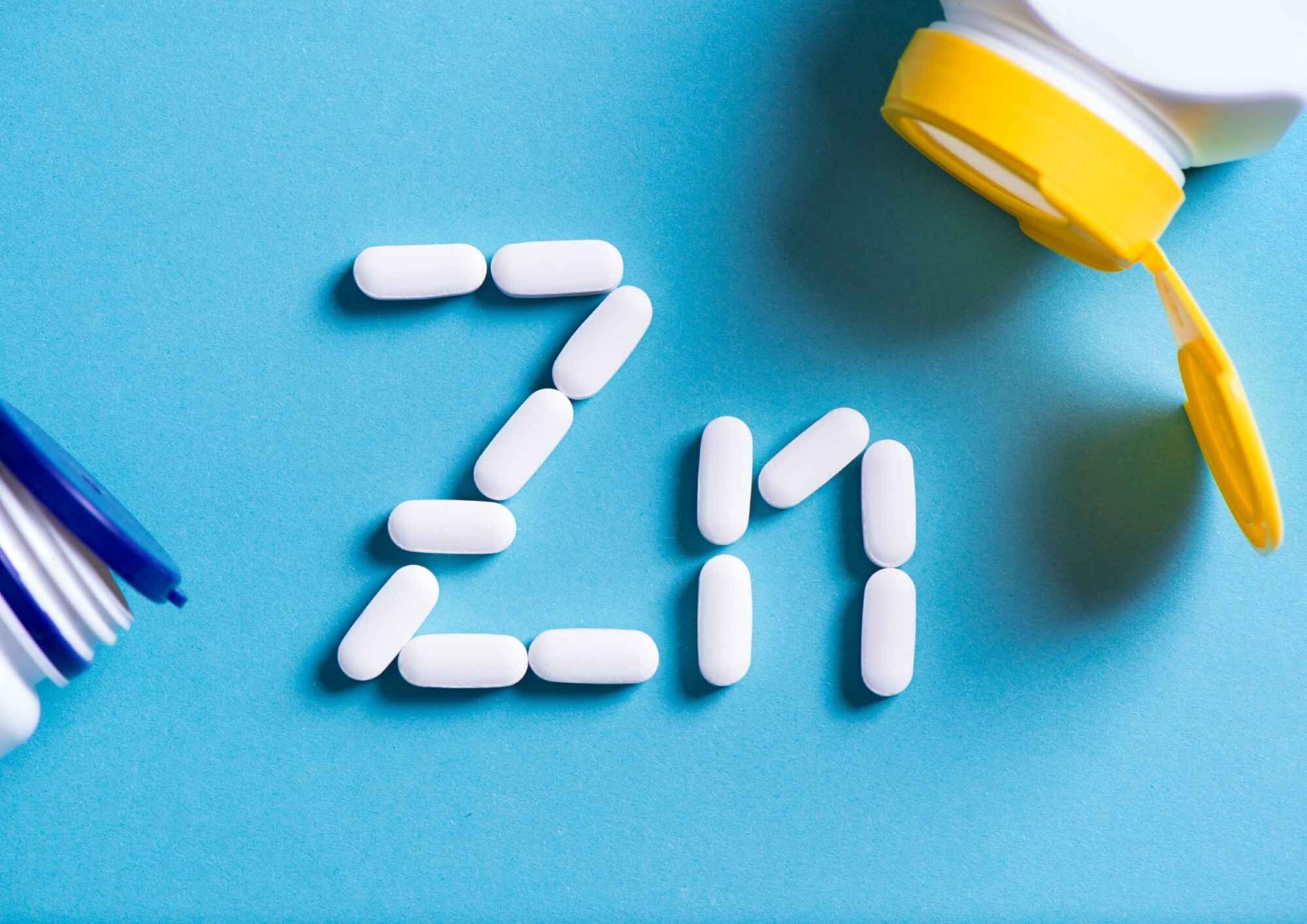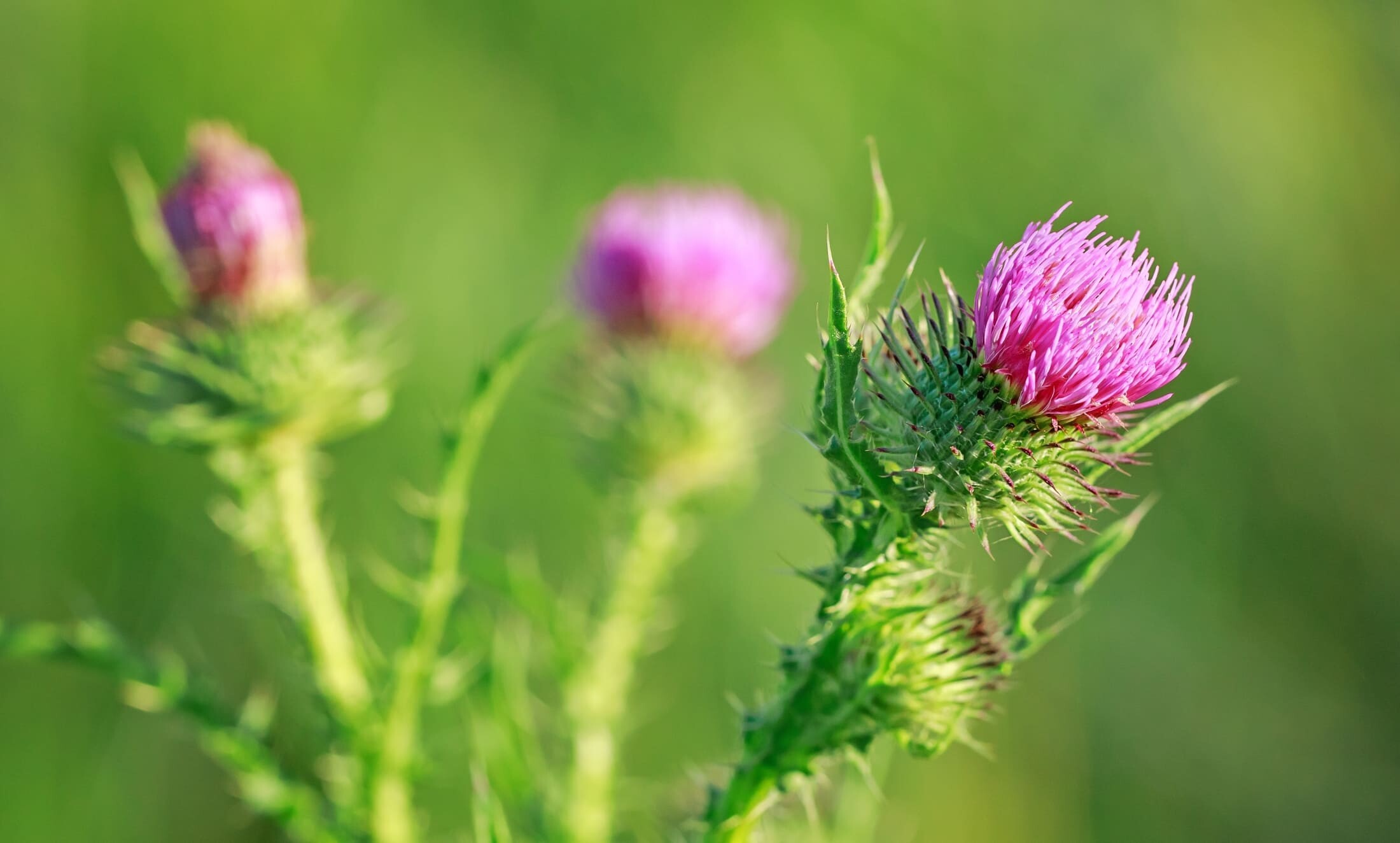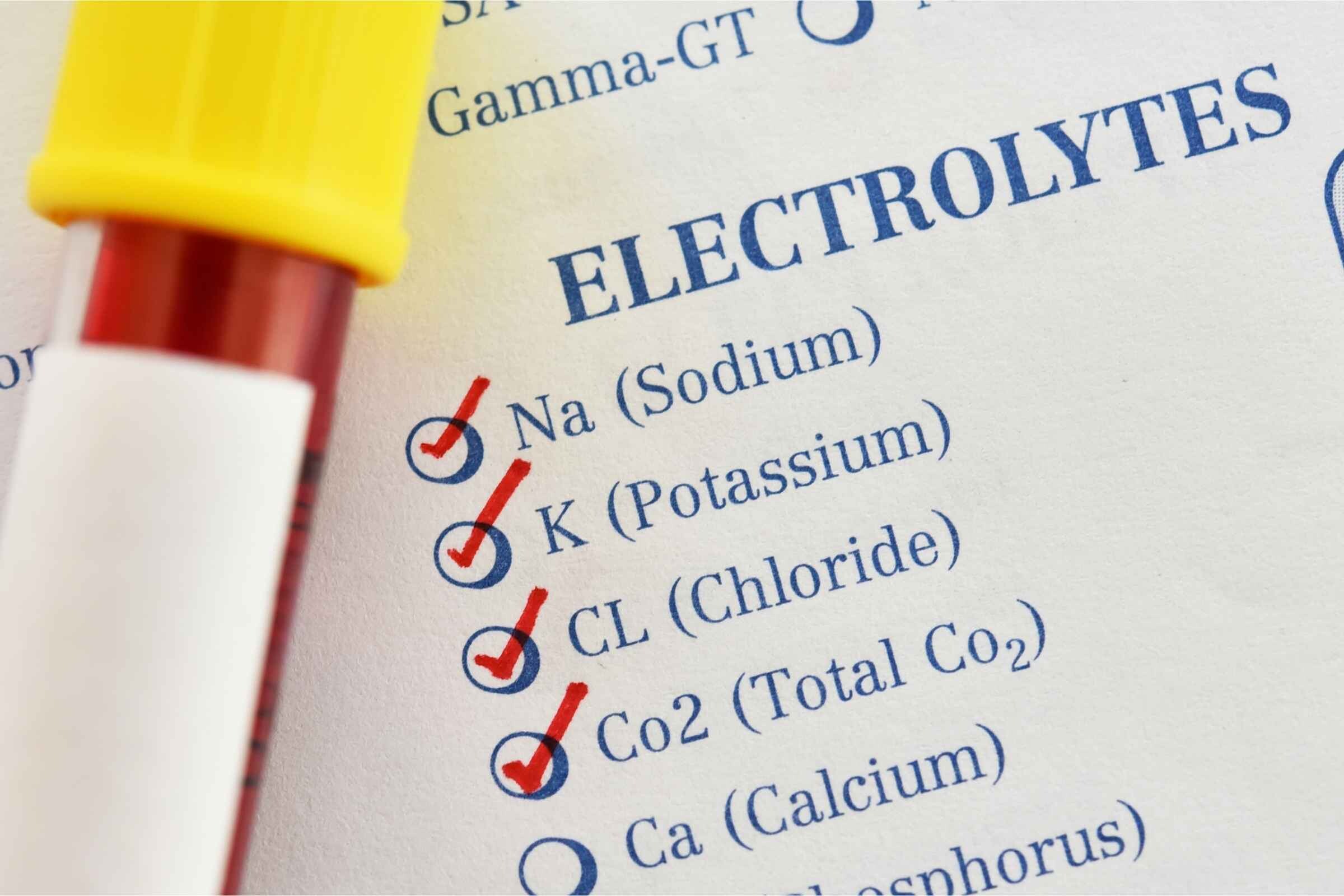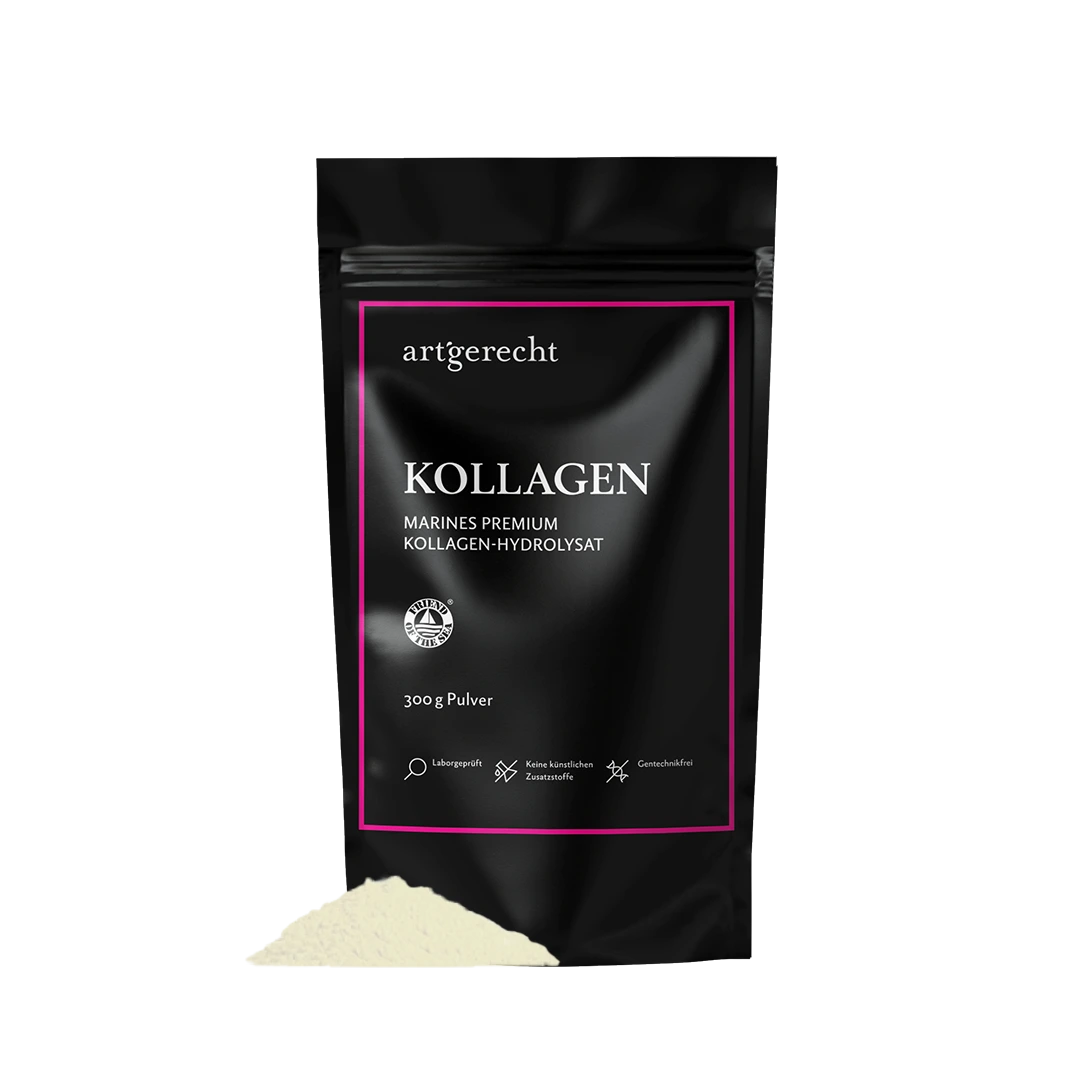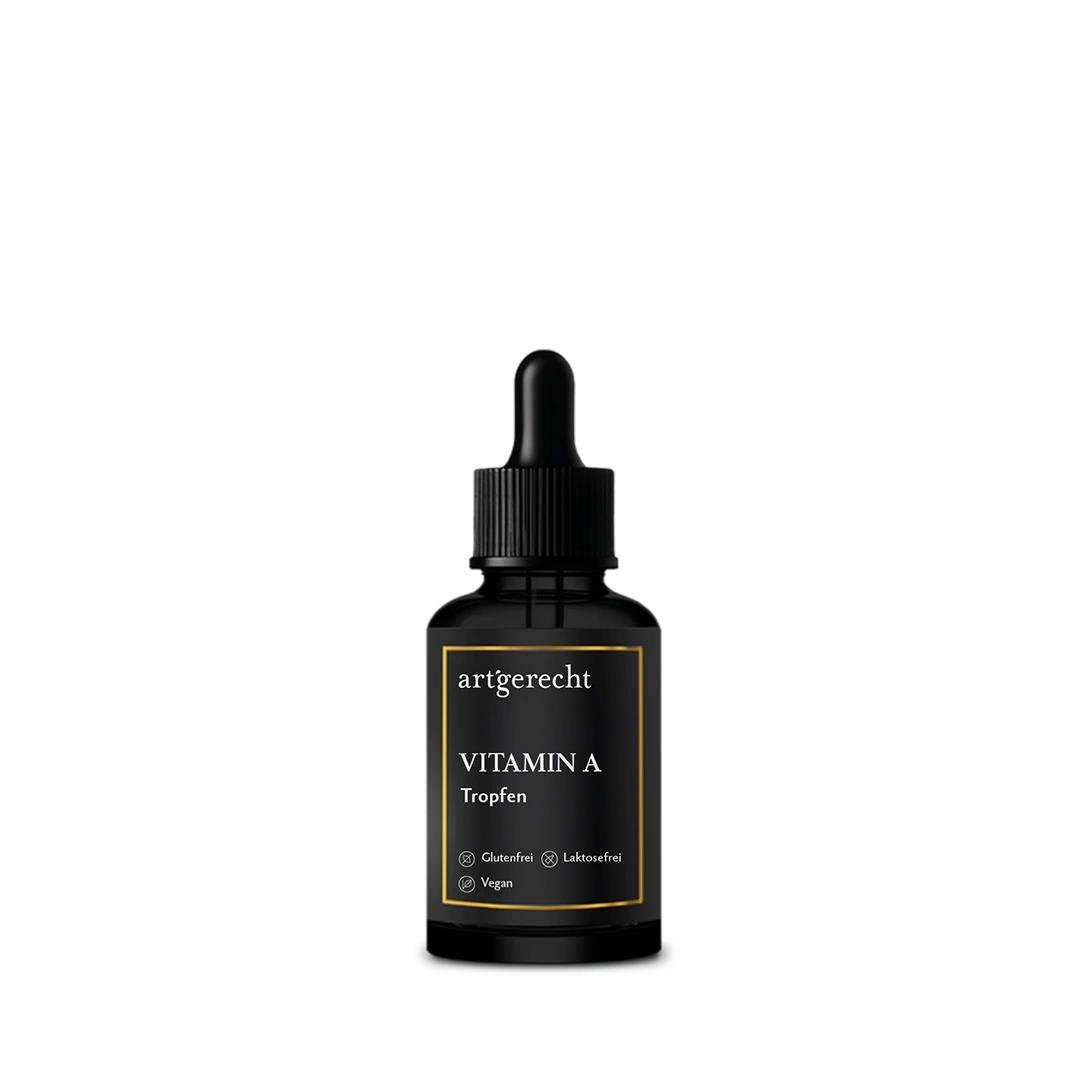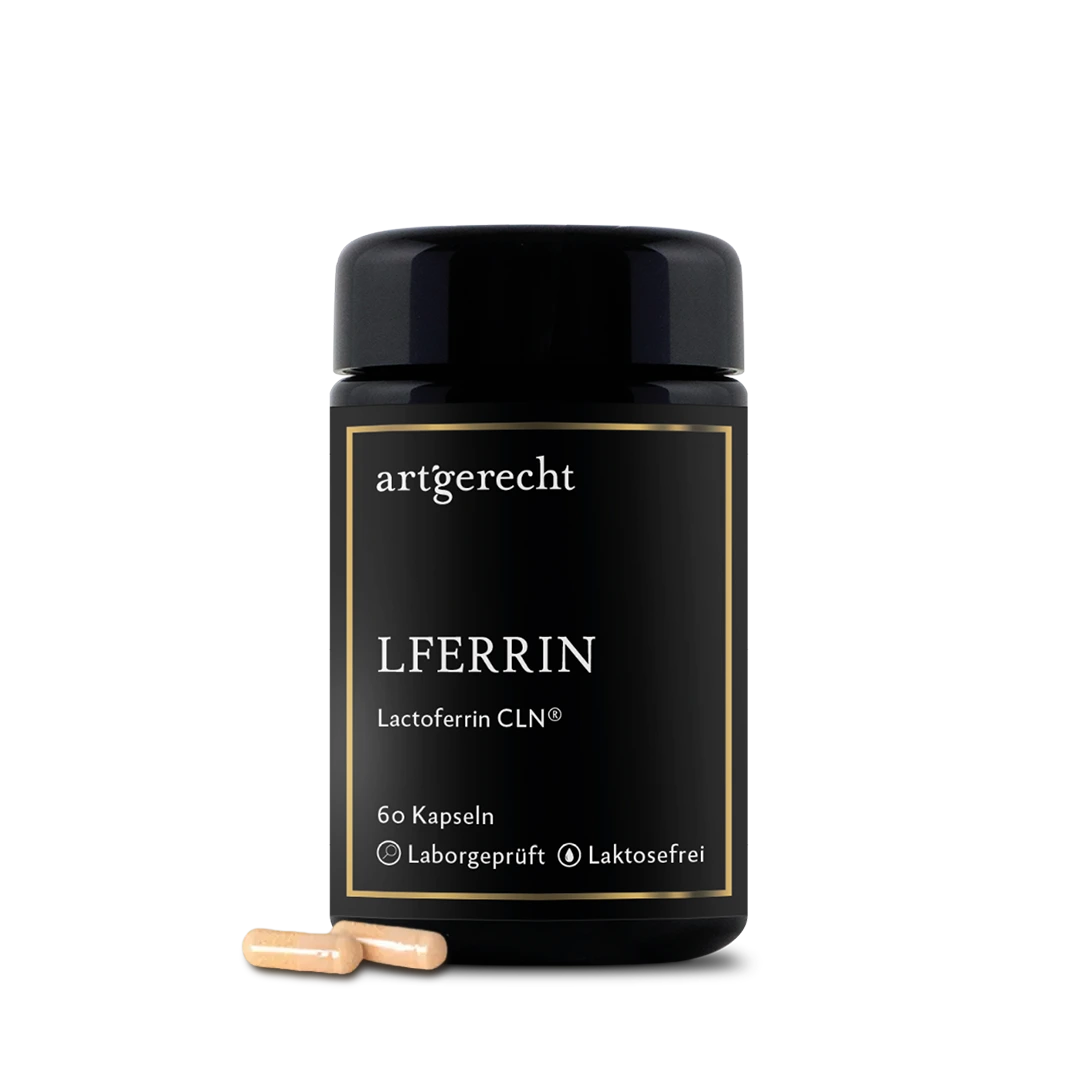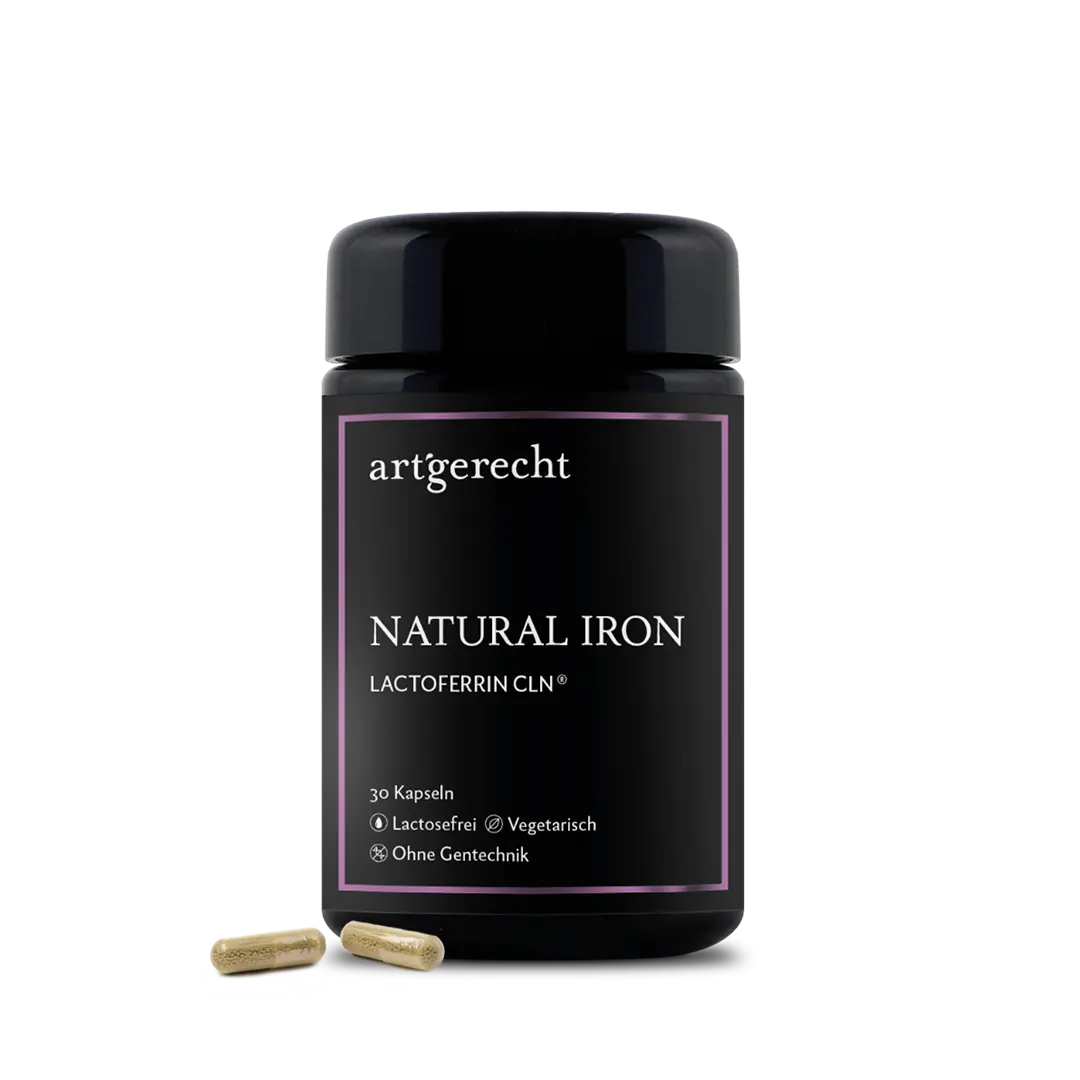The microbiome is a part of every human being
Only a small part of our body is actually human. Most of the other cells are microorganisms such as bacteria, eukaryotes and archaea. It is becoming increasingly clear that we are not just a host for these organisms, but that our microbiome, as they are known collectively, is a separate part of every human being. A highly complex system that is responsible for the effective provision of many substances necessary for our life processes.
Only together with the microbiome is the superorganism complete and can exist in the long term. Most diseases of civilization - be it type 2 diabetes mellitus, obesity, allergies, chronic inflammatory bowel disease, but also neurological and mental illnesses such as Alzheimer's disease - are now associated with a microbiotic imbalance.
Lactoferrin plays an important role in the body's innate immune system and, as a component of body fluids such as saliva, is an important component in the host's first line of defense [1]. In the work of Nakano et al., lactoferrin showed a shift in the microbiome towards a gram-positive dominant community, which can contribute to an improvement in oral health [2].
The immune system is seen as an army of organs, tissues, cells and molecules that protect against disease by eliminating pathogens. A clear definition of good and bad pathogens is sometimes difficult to make. We not only live in contact with a multitude of microbes, but also with billions of symbionts. Together they form a superorganism that is capable of optimal life. The immune system is therefore not only responsible for eliminating potentially harmful germs, but must also ensure that a balance is maintained so that microbes and host can live together as a superorganism [3].
In their article, Eberl et al. describe humans as a superorganism and the direct functional, protective and immunological benefits that the connection between host and microbiome produces.
In the gut, for example, microbes benefit from an environment that is regularly flooded with nutrients, while the host benefits from their microbial activity, which supplements digestive processes, breaks down toxins, regenerates the epithelium and forms a barrier against potential pathogens.
However, these microbial communities live on all body surfaces, including the entire length of the digestive tract, the mucous membranes and the skin surface.
Intestinal flora in particular plays an important role in the development and maturation of the immune system. The dynamics of this balance result from changes in the composition of the microbiota caused by changes in environmental factors such as chemicals, food and invading microbes. The host must have evolved a flexible system that adapts to these changes and maintains the superorganism's homostasis [3].
Homostasis (equilibrium) within the superorganism is defined by the optimal coexistence of host and microbiome. This is a dynamic equilibrium in which the growth and movement of microbes is constantly controlled by the host's immune system [3].
Studies have shown that the microbiome has a clearly positive effect on both the systemic and local immune response, for example in the mucous membranes (e.g. lungs) [4]. The intake of probiotics has also been shown to be particularly supportive in the defense against viruses in the respiratory tract [5].
The study by Mortaz et al. showed a general improvement in the function and number of immune cells through the intake of probiotics [6], which can lead to an improved and more efficient immune defense. In addition, inflammatory mechanisms are inhibited and thus prevent an exaggerated inflammatory response by modulating the immune system [7-9].
Lactoferrin supplementation on its own contributes significantly to improving the composition of the intestinal flora and promoting the growth of probiotic bacteria. Probiotic bacteria are hardly sensitive to the antimicrobial effect of lactoferrin, whereas the more harmful germs show a higher sensitivity [10].
Multiple studies have shown that lactoferrin even increases the growth rate of beneficial bacteria such as Bifidobacterium bifidum, B. longum, B. lactis, B. infantis, Lactobacillus reuteri, L. rhamnosus and L. coryniformis [10-13] in contrast to its antibacterial effect against colonization by pathogenic germs. In combination with probiotics, lactoferrin has the potential to influence the composition of the intestinal microflora by inhibiting intestinal pathogens without having any significant effect on probiotic bacteria [12].The probiotic effect of lactoferrin therefore results from the inhibitory effect on the pathogenic components of the microbiome, but also from the stimulation of the growth of specific symbionts. The exact mechanism of this growth stimulation has not yet been conclusively clarified and requires further research in the future [10].
Sources
1 Mulder AM, Connellan PA, Oliver CJ, Morris CA, Stevenson LM. Bovine lactoferrin supplementation supports immune and antioxidant status in healthy human males. Nutrition research (New York, N.Y.) 2008; 28: 583–589.
.2 Nakano M, Wakabayashi H, Sugahara H, Odamaki T, Yamauchi K, Abe F, Xiao J-Z, Murakami K, Ishikawa K, Hironaka S. Effects of lactoferrin and lactoperoxidase-containing food on the oral microbiota of older individuals. Microbiology and immunology 2017; 61: 416–426.
3 Eberl G. A new vision of immunity: homeostasis of the superorganism. Mucosal immunology 2010; 3: 450–460.
4 Zelaya H, Alvarez S, Kitazawa H, Villena J. Respiratory Antiviral Immunity and Immunobiotics: Beneficial Effects on Inflammation-Coagulation Interaction during Influenza Virus Infection. Frontiers in immunology 2016; 7: 633.
5 Baud D, Dimopoulou Agri V, Gibson GR, Reid G, Giannoni E. Using Probiotics to Flatten the Curve of Coronavirus Disease COVID-2019 Pandemic. Frontiers in public health 2020; 8: 186.
6 Mortaz E, Adcock IM, Folkerts G, Barnes PJ, Paul Vos A, Garssen J. Probiotics in the management of lung diseases. Mediators of inflammation 2013; 2013: 751068.
7 Sharma G, Im SH. Probiotics as a Potential Immunomodulating Pharmabiotics in Allergic Diseases: Current Status and Future Prospects. Allergy, asthma & immunology research 2018; 10: 575–590.
8 Hajavi J, Esmaeili S-A, Varasteh A-R, Vazini H, Atabati H, Mardani F, Momtazi-Borojeni AA, Hashemi M, Sankian M, Sahebkar A. The immunomodulatory role of probiotics in allergy therapy. Journal of cellular physiology 2019; 234: 2386–2398.
9 Chong H-X, Yusoff NAA, Hor Y-Y, Lew L-C, Jaafar MH, Choi S-B, Yusoff MSB, Wahid N, Abdullah MFIL, Zakaria N, Ong K-L, Park Y-H, Liong M-T. Lactobacillus plantarum DR7 improved upper respiratory tract infections via enhancing immune and inflammatory parameters: A randomized, double-blind, placebo-controlled study. Journal of dairy science 2019; 102: 4783–4797.
10 Chen PW, Liu ZS, Kuo TC, Hsieh MC, Li ZW. Prebiotic effects of bovine lactoferrin on specific probiotic bacteria. Biometals : an international journal on the role of metal ions in biology, biochemistry, and medicine 2017; 30.
11 Chen P-W, Ku Y-W, Chu F-Y. Influence of bovine lactoferrin on the growth of selected probiotic bacteria under aerobic conditions. Biometals : an international journal on the role of metal ions in biology, biochemistry, and medicine 2014; 27: 905–914.
12 Tian H, Maddox IS, Ferguson LR, Shu Q. Influence of bovine lactoferrin on selected probiotic bacteria and intestinal pathogens. Biometals : an international journal on the role of metal ions in biology, biochemistry, and medicine 2010; 23: 593–596.
13 Vega-Bautista A, La Garza M de, Carrero JC, Campos-Rodríguez R, Godínez-Victoria M, Drago-Serrano ME. The Impact of Lactoferrin on the Growth of Intestinal Inhabitant Bacteria. International Journal of Molecular Sciences 2019; 20: 4707.


